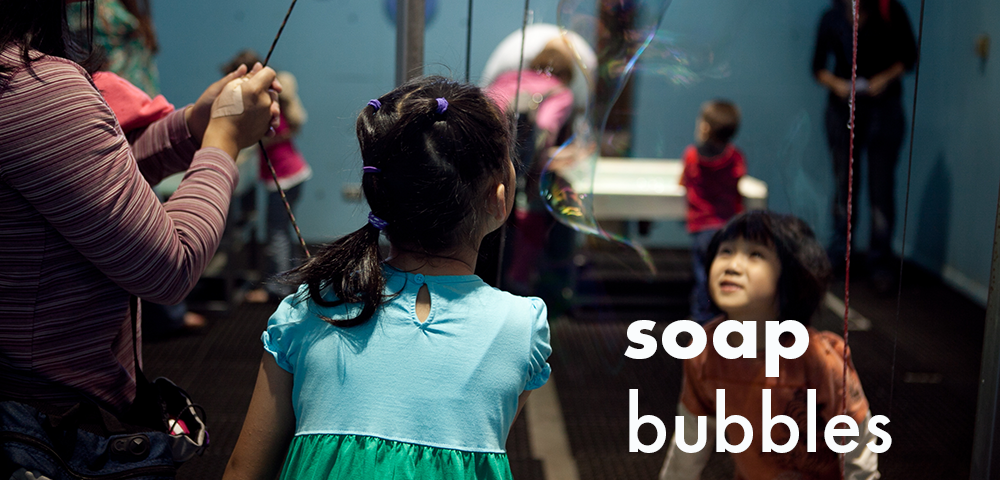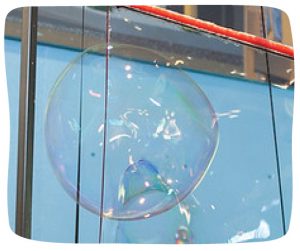
Bubble solution is easy to make and provides endless fun. If you’re at home missing the museum’s Bubbles exhibit, whip up some fun in your own kitchen!
MATERIALS
- 1 large bowl, plastic dishpan, or other container
- ¼ cup dishwashing detergent
- 2½ cups cold water
- Baking sheet or plastic plate to contain the bubble solution (Newspaper is helpful to have on hand too!)
- Bubble-making materials (ex. Pipe cleaners, paper clips, cookie cutters, fruit baskets, slotted spoons, straws, etc.)
Note: This makes 3 cups of bubble solution. Adjust the recipe to make as much as you would like. Depending on what type of dish soap you are using, you may need to add more soap to the solution. Try it out and play around!
TO MAKE THE SOLUTION
- Measure out the water and dish soap into a container.
- Stir gently — you don’t want to create froth when mixing
- Test it out by dipping your hand in the solution and making the “OK” symbol with your fingers. Can you blow a bubble? If the solution pops too easily, add a bit more soap and try again. If it seems too thick, add more water. Older kids can help with this.

EXPERIMENT
- Look around your house together for materials that could make good bubble makers. If you are experimenting inside, we suggest using items like straws that will help make fun bubbles on a plastic plate or tray. If experimenting outside, try going big with items like a spatula or a big loop of string.
- Before dipping the materials into the bubble solution, predict what will happen. Will that material make bubbles? What shape will the bubble be? You may be surprised that the bubbles are always spheres, no matter what shape the bubble-maker is. This is caused by surface tension — kind of like a thin elastic sheet between liquid and air that makes the liquid want to be as compact as possible.
- Keep experimenting! Do hands work to make bubbles? Do the bubbles look different if you blow into the bubble maker versus waving it in the air?
Tip: These experiments can get messy! You may want to experiment in your backyard or spread out newspaper/tablecloth to catch spills before starting.

